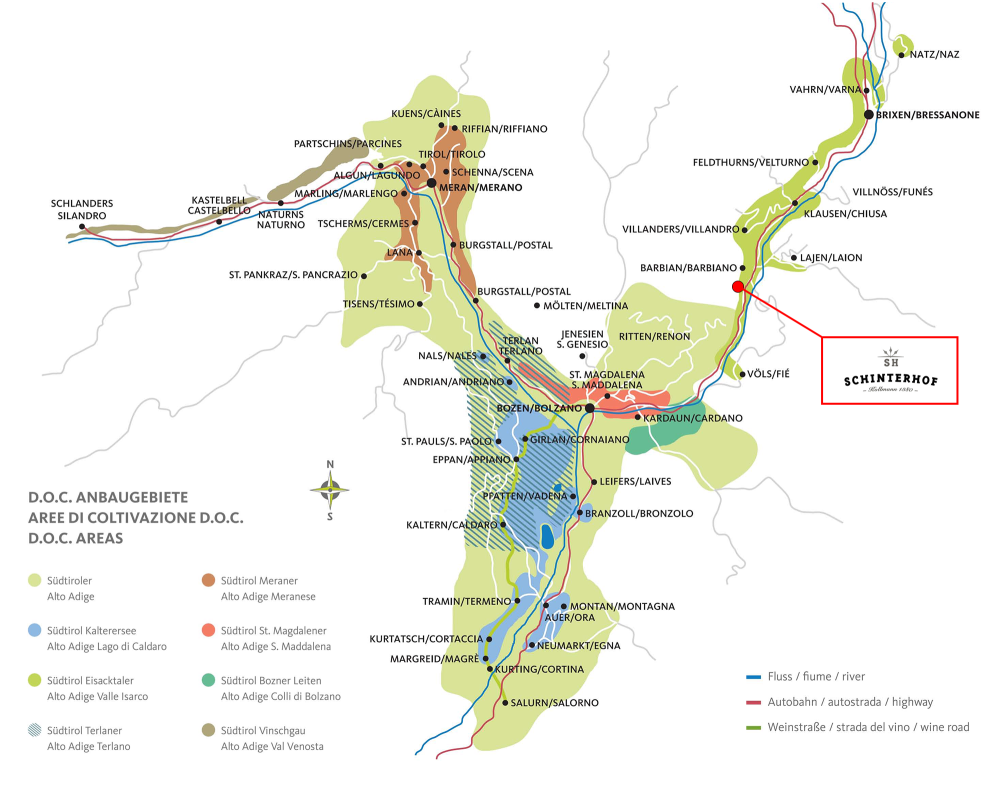SCHINTERHOF LAGEN
Vineyard area Eisacktal
The wine-growing areas in the Eisack Valley extend from Brixen in the north to the Ritten near Bolzano in the south.
The terroir in the Eisack Valley is characterised by a mixture of slate, gneiss, granite and gravelly, sandy moraine soils, which constantly change in composition from north to south.
From Brixen towards the south, the valley becomes much narrower. The vineyards and wine farms are mainly located on the right side of the valley. South of Brixen to below Klausen, quartz phyllite is the main rock, from Barbian-Kollmann we have mainly quartz porphyry and, due to the moraine deposits, glacial gravels and also interglacial river deposits are the reason for permeable soils that can quickly absorb heat. The high proportion of silicates in the soils gives the wines from the Eisack Valley their characteristic mineral note.
The wine-growing areas in the Eisack Valley extend from Brixen in the north to the Ritten near Bolzano in the south.
The terroir in the Eisack Valley is characterised by a mixture of slate, gneiss, granite and gravelly, sandy moraine soils, which constantly change in composition from north to south.
From Brixen towards the south, the valley becomes much narrower. The vineyards and wine farms are mainly located on the right side of the valley. South of Brixen to below Klausen, quartz phyllite is the main rock, from Barbian-Kollmann we have mainly quartz porphyry and, due to the moraine deposits, glacial gravels and also interglacial river deposits are the reason for permeable soils that can quickly absorb heat. The high proportion of silicates in the soils gives the wines from the Eisack Valley their characteristic mineral note.
Map of vineyards
